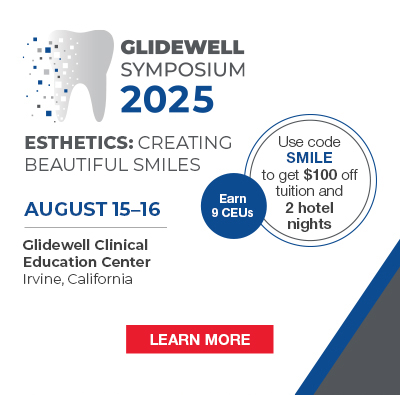Current challenges in adhesive dentistry include overhydrophilic bonding formulations, which facilitate water percolation through the hybrid layer and result in unreliable bonded interfaces. A study by RR Morães and other researchers from the Federal University of Pelotas (Brazil) published in the Journal of Dental Research introduces nanogel-modified adhesives as a way to control the material’s hydrophobic character without changing the basic monomer formulation (keeping water-chasing capacity and operatory techniques unaltered). In the study, nanogel additives of varied hydrophobicity were synthesized in solution, rendering 10- to 100-nm-sized particles. A model BisGMA/HEMA solvated adhesive was prepared (control), to which reactive nanogels were added. The study found that the increase in adhesive viscosity did not impair solvent removal by air-thinning. The degree of conversion in the adhesive was similar between control and nanogel-modified materials, while the bulk dry and, particularly, the wet mechanical properties were significantly improved through nanogel-based network reinforcement and reduced water solubility. As preliminary validation of this approach, short-term microtensile bond strengths to acid-etched and primed dentin were significantly enhanced by nanogel inclusion in the adhesive resins.
(Source: Journal of Dental Research, 2012, Volume 91, Number 2, pages 179 to 184; published online October 21, 2011)




